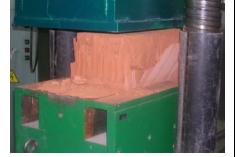1 Post-Doctoral Research Fellow, University of Pavia and EUCENTRE, Italy, paolo.morandi@unipv.it
2 Associate Professor, University of Pavia and EUCENTRE, Italy, guido.magenes@unipv.it
3 Assistant researcher, EUCENTRE Pavia, Italy, luca.albanesi@eucentre.it
ABSTRACT
Being pushed by market competition, the masonry industry improved the thermal properties of masonry units and developed new, faster and more economical technologies of construction. As a result of such development, hollow masonry units with large percentage of voids, thin shells and webs are produced. Nevertheless, clay units with thin webs/shells, could potentially represent a source of weakness and brittleness when used in structural masonry walls, either under prevailing vertical loading or under seismic actions. In this paper, a part of an experimental research on the evaluation of the mechanical characteristics of different typologies of masonry made with thin shell/web clay units is reported. The results of the mechanical characterization tests have shown that the different typologies of masonry considered in this research seem to have adequate properties required for a load-bearing material and are suitable to be used as structural masonry when seismic loading is not a concern. Moreover, some critical aspects related to the test procedures have also been discussed.
KEYWORDS: thin shell/web hollow clay units, masonry specimens, characterization tests, unit strength and stiffness
467.pdf



